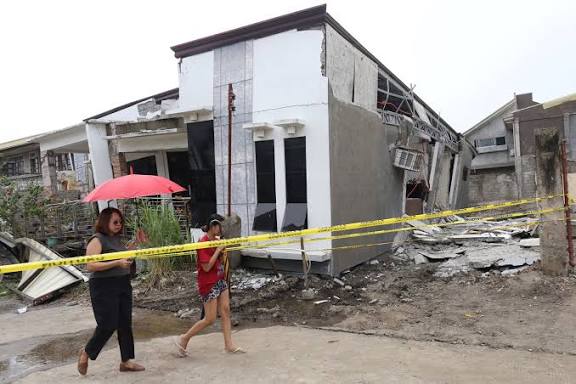A powerful 7.4-magnitude earthquake struck off the southern Philippines on Friday, killing at least one person and briefly triggering tsunami warnings across parts of the region.
According to the United States Geological Survey (USGS), the quake hit around 9:43 a.m. local time (0143 GMT), about 20 kilometres (12 miles) off the coast of Manay in the Mindanao region.

Authorities confirmed that one person died after a wall collapsed in Mati City, the largest urban area near the quake’s epicentre.
Following the tremor, Philippine officials issued tsunami warnings and ordered residents in coastal communities along the eastern seaboard to evacuate immediately, fearing waves as high as three metres (10 feet).
However, by noon, the Pacific Tsunami Warning Centre lifted its alert for the Philippines, Palau, and Indonesia, stating that “there is no longer a tsunami threat from this earthquake.”
Wes Caasi, a local official in Tagum City, told AFP that panic broke out during a government event when the quake hit.
“People screamed and ran,” he said. “It was chaos. I even saw city workers scrambling down a metal Christmas tree they were decorating.”

Witnesses across nearby towns reported students and office workers rushing out of schools, malls, and buildings, though most damage appeared minor and scattered.
Police officer Dianne Lacorda from Davao Oriental province said power and communication lines were cut off, making it difficult for authorities to assess the full extent of the damage.
In a statement on Facebook, the provincial government announced that classes were suspended and non-essential workers were sent home “until further notice.”
Christine Sierte, a teacher in Compostela, said she was in the middle of an online meeting when the violent shaking began.
> “It started slow, then suddenly got stronger. That was the longest time of my life,” she said. “The ceiling of some offices fell, but thankfully no one was injured. Some students had panic attacks and struggled to breathe.”

In Davao City, journalist Kath Cortez said small cracks appeared in her family’s home.
“I was shocked by how strong it was,” she said, adding that everyone ran out for safety.
Around the same time, the USGS also recorded a 6.2-magnitude earthquake southeast of Manus Island in Papua New Guinea, and another tremor near Lae, the country’s second-largest city, earlier in the week. No major damage was reported.
Friday’s quake comes just 11 days after a 6.9-magnitude earthquake hit the central island of Cebu, killing 74 people and damaging or destroying over 72,000 homes.
The Philippines experiences earthquakes almost daily, as it lies along the Pacific Ring of Fire — a highly active seismic zone stretching from Japan through Southeast Asia to the Pacific coast of the Americas.




